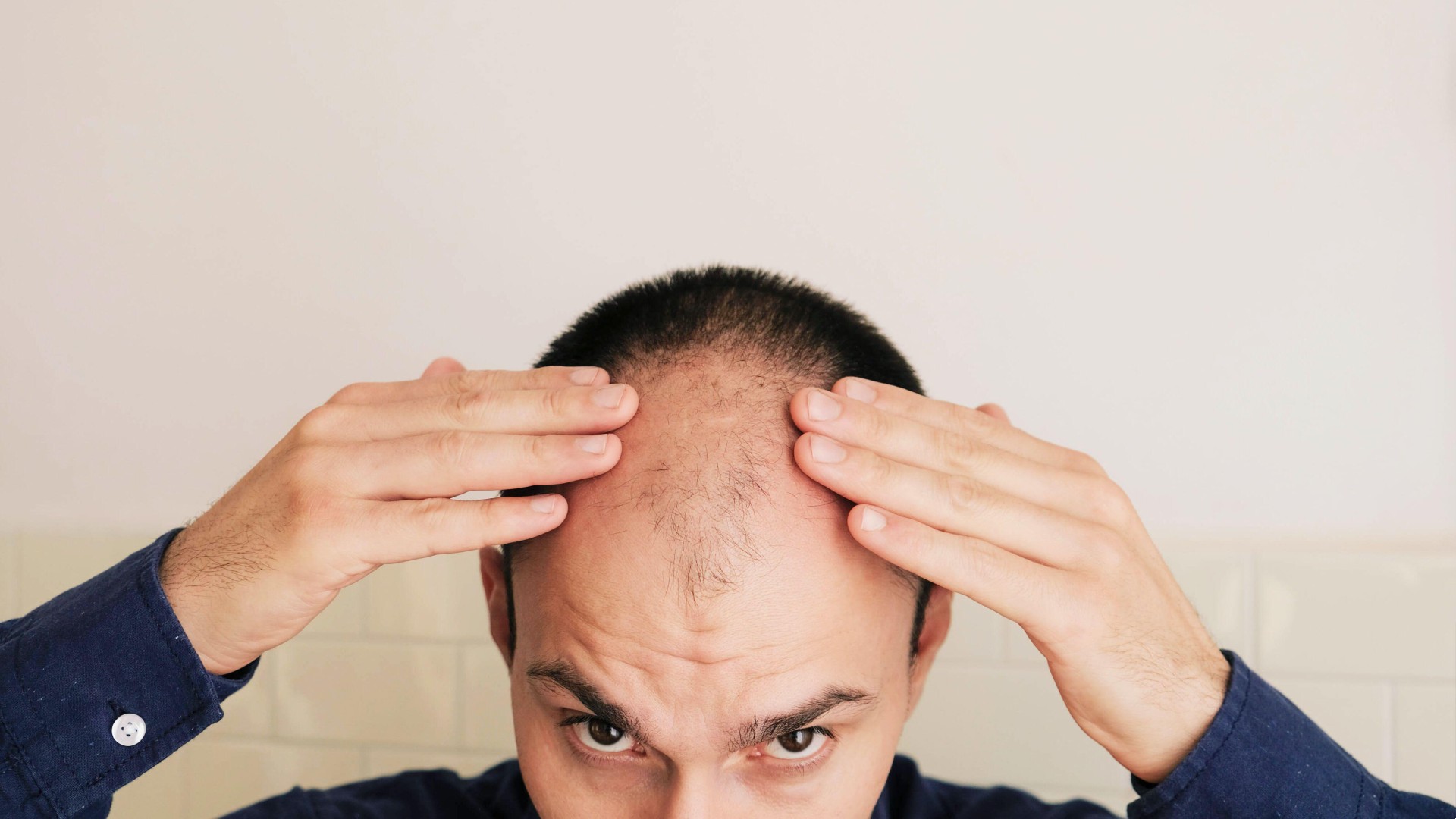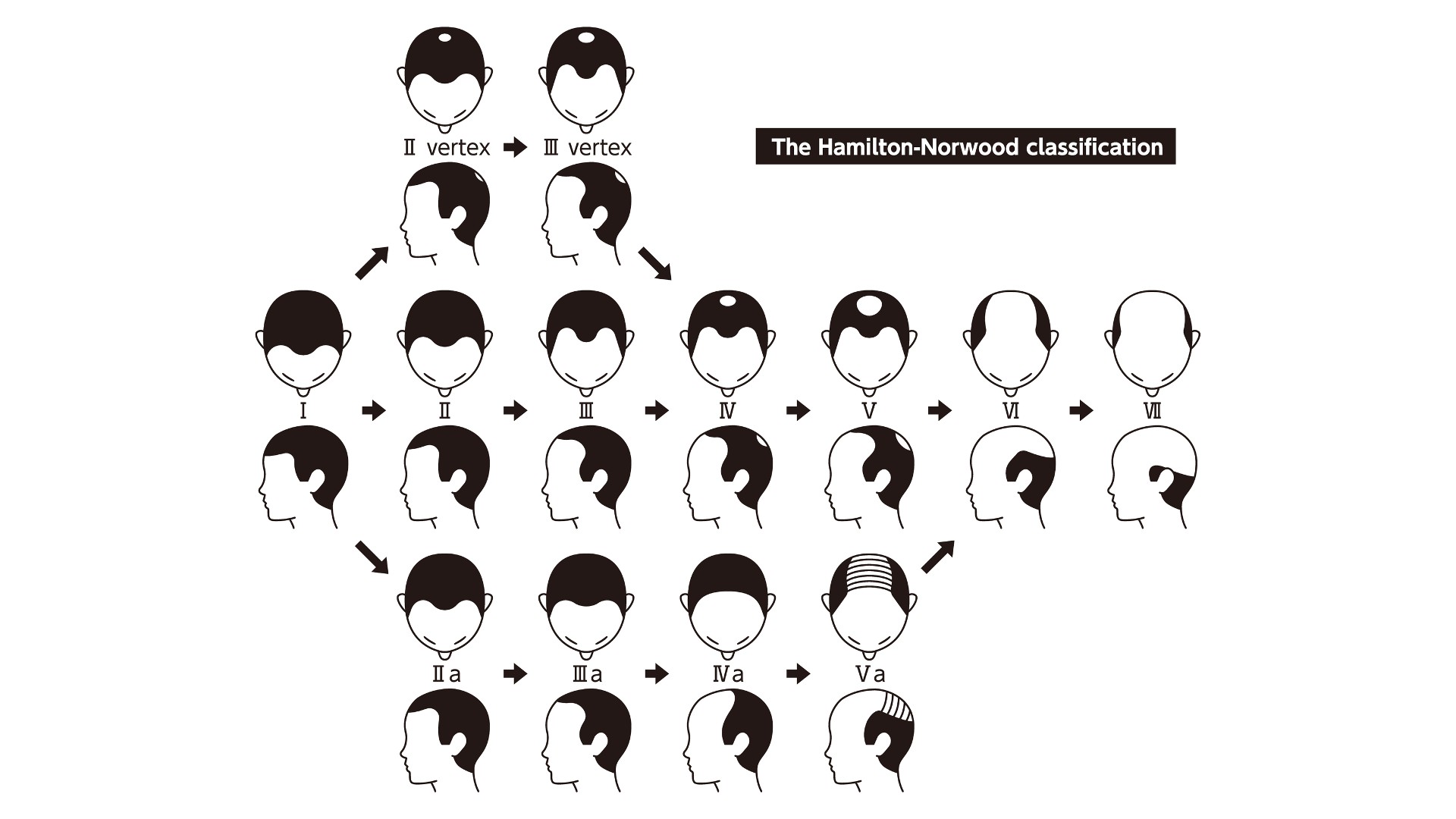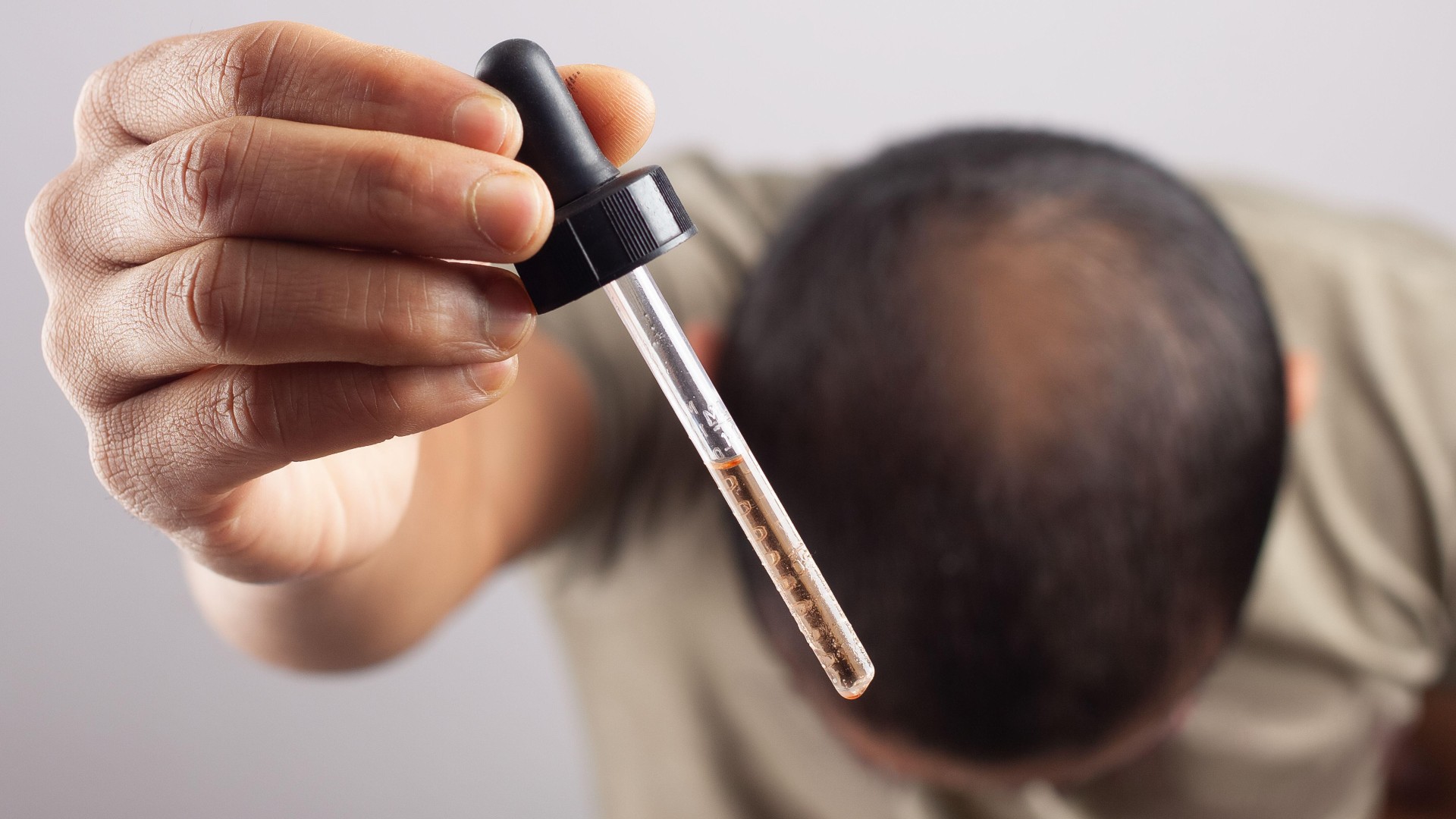
Androgenetic alopecia, also known as male pattern baldness (MPB), is the most common cause of hair loss in men. It begins as a receding hairline or bald spot on the top of the head, progressing over time to the sides and rear of the head. The factors that drive this type of hair loss can also cause hair thinning, where hairs grow smaller in diameter, according to the American Academy of Dermatology (AAD).
Male pattern baldness affects males of all ages. Two-thirds of American men will experience some degree of hair loss due to MPB by age 35, and approximately 25% of men begin the process before they reach age 21, according to the American Hair Loss Association (AHLA).
Why do men go bald from the top of their heads?
People may lose their hair for many reasons, including serious diseases, reactions to certain medications, and in rare cases, extremely stressful events, but most hair loss in men can be ascribed to genetic and hormonal factors. However, the exact mechanisms behind male pattern baldness aren't fully understood, and it is likely to have more than one cause.
People with MPB tend to carry genes that make their hair follicles highly sensitive to dihydrotestosterone (DHT), a byproduct of testosterone, according to AHLA. An enzyme called Type 2 5-alpha-reductase converts a small percentage of the body's testosterone into DHT; this enzyme can be found in various body parts, as well as in hair follicles. Hair follicles around the temples, mid-anterior scalp and hairline appear to be most sensitive to DHT, and in general, balding scalp may have a higher concentration of DHT than non-balding scalp, according to a 2020 study published in the journal Frontiers in Pharmacology.
DHT binds to androgen receptors on hair follicles, causing the follicles to shrink and their life spans to shorten. Eventually, these hair follicles stop producing hair.
Hair follicles in balding scalp may carry more androgen receptors than those in non-balding scalp. In addition, certain genetic variations in the androgen receptor (AR) gene may make hair follicles more susceptible to the effects of DHT, which in turn increases the risk of MPB. The age at which MPB starts may also be determined by genetic variations in the AR gene.

In a 2017 study published in the journal Nature Communications, scientists analyzed genetic profiles of 10,846 participants and found that, in addition to genes involved in the hair growth cycle, androgenetic alopecia may also be linked to genes involved in the sleep-wake cycle and the formation of fat cells within the body.
Changes in the activity of stem cells may also play a role in male pattern baldness. For example, a 2020 study in mice suggests that hair follicle stem cells (HFSCs) in aging skin show different gene activity than those in young skin, and this may be linked to declines in hair growth. In addition, stem cells derived from fat tissue in the scalp tend to secrete more inflammatory proteins in balding areas than in non-balding areas, according to a 2022 study published in the journal Experimental Dermatology. Such inflammatory markers have been linked to impaired activity in genes involved in hair growth.
Researchers have also found that disrupted functioning of testosterone receptors in the scalp may lead to the degeneration of blood vessels that nourish hair follicles. This can result in a reduction in supply of oxygen and nutrients necessary for hair growth.
Are there treatments for male pattern baldness?

Hair loss can often be treated with a variety of at-home treatments, including over-the-counter and prescribed medications, according to AAD.
Over-the-counter minoxidil (brand name Rogaine) can help during the early stages of hair loss. Many people see some regrowth when using this medication, but it may take about six to 12 months to see results. Minoxidil appears to be particularly effective when used along with another treatment, such as microneedling, a type of treatment that uses small needles to cause tiny punctures in the skin, AAD said.
Microneedling may stimulate hair follicle growth and allow topical treatments, such as steroid creams, to reach deeper layers of the scalp. Available evidence suggests that this strategy is safe and effective for MPB, but more large, gold-standard clinical trials are "strongly recommended to provide more definitive evidence," according to a 2022 review published in the journal Aesthetic Plastic Surgery.
Prescription medication, such as finasteride (brand name Propecia) can also stimulate hair growth, according to AAD. However, this medication carries a risk of side effects that minoxidil doesn't, such as decreased libido and changes in cognition, including brain fog, according to a 2012 review published in The Journal of Sexual Medicine.
Other procedures to regrow hair involve injections of corticosteroids into the bald areas, hair transplants and platelet-rich plasma treatment, a procedure that involves injecting blood plasma into the area with hair loss, AAD said. Platelet-rich plasma treatment, in particular, is considered a safe and effective alternative to hair loss medications, because it carries a low risk of serious side effects.
In addition, there are surgical treatments available for hair loss, including hair transplants and scalp reductions, which involve removing balding tissue from the scalp, according to Stanford Medicine.







